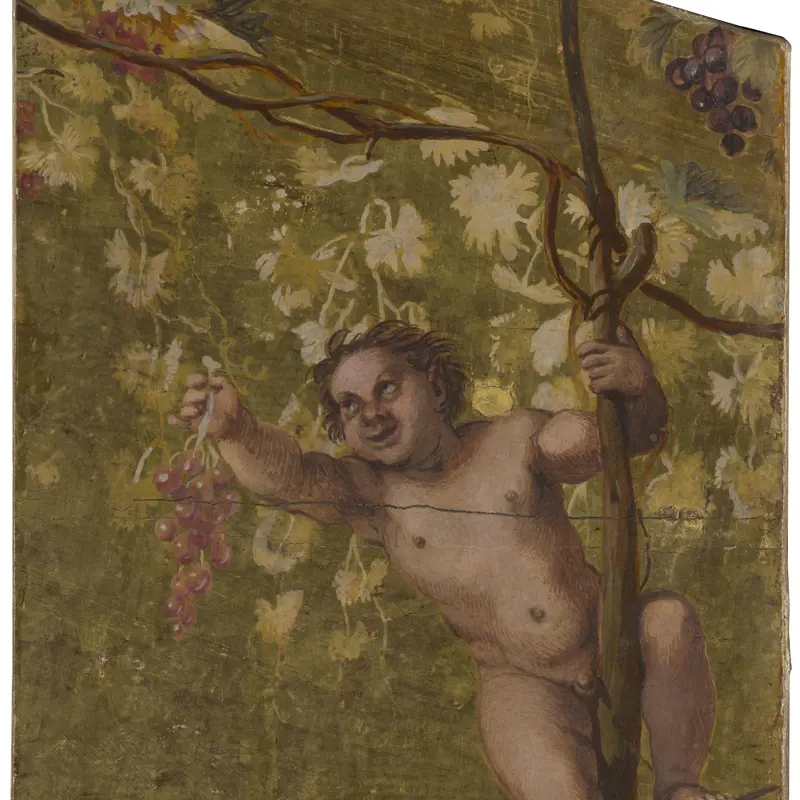Annibale Carracci, 'The Dead Christ Mourned ('The Three Maries')', about 1604
About the work
Overview
This is perhaps the most poignant image in the National Gallery’s collection of the pietà – the lamentation over the dead Christ following his crucifixion. It was a subject to which Annibale Carracci returned frequently, especially during the last decade of his life.
Here, the limp and lifeless body of Christ lies in the lap of his mother, the Virgin Mary. A distraught Mary Magdalene kneels on the right, hands raised and mouth open in a wail of anguish. At the back an older woman in dark green reaches out towards the fainting Virgin, whose weight is supported by a fair-haired young woman.
The composition is built on strong diagonals and our eye is guided around the picture by colour, gaze and expression. Annibale has skilfully concentrated our attention on each figure and her emotional response in turn. His ability to paint different emotions is exactly what appealed to later admirers of this painting, which brilliantly combines formal classicism with intense human sentiment.
Key facts
Details
- Full title
- The Dead Christ Mourned ('The Three Maries')
- Artist
- Annibale Carracci
- Artist dates
- 1560 - 1609
- Date made
- About 1604
- Medium and support
- Oil on canvas
- Dimensions
- 92.8 × 103.2 cm
- Acquisition credit
- Presented by Rosalind, Countess of Carlisle, 1913
- Inventory number
- NG2923
- Location
- Room 26
- Collection
- Main Collection
- Previous owners
- Frame
- 17th-century Italian Frame
Provenance
Additional information
Text extracted from the ‘Provenance’ section of the catalogue entry in Michael Levey, ‘National Gallery Catalogues: The Seventeenth and Eighteenth Century Italian Schools’, London 1986; for further information, see the full catalogue entry.
Exhibition history
-
2019Caravaggio and BerniniKunsthistorisches Museum Wien15 October 2019 - 19 January 2020Rijksmuseum Amsterdam14 February 2020 - 13 September 2020
Bibliography
-
1986Levey, Michael, National Gallery Catalogues: The Seventeenth and Eighteenth Century Italian Schools, London 1986
-
2001
C. Baker and T. Henry, The National Gallery: Complete Illustrated Catalogue, London 2001
About this record
If you know more about this work or have spotted an error, please contact us. Please note that exhibition histories are listed from 2009 onwards. Bibliographies may not be complete; more comprehensive information is available in the National Gallery Library.








